Sigma 70-200mm F/28 Dg Os Hsm Sports Lens Review
Our Verdict
It's something of a beast in the hands, just if y'all can tolerate that then the 70-200mm f/2.eight DG OS HSM | Sports will reward you with first-class all-round performance. The fact that Sigma has managed to evangelize it at this toll makes it all the more impressive.
For
- Very effective image stabilisation
- Great build quality
- Sharp results, even wide open at f/ii.8
- Superb control over chromatic aberration
Confronting
- Zoom band position might bother some
- Heavy, even by 70-200mm f/two.8 standards
- Some vignetting (particularly at 70mm end)
- Tripod foot can't be removed
TechRadar Verdict
It's something of a creature in the hands, but if you can tolerate that then the 70-200mm f/two.8 DG OS HSM | Sports volition reward you with splendid all-round performance. The fact that Sigma has managed to deliver it at this price makes it all the more impressive.
Pros
- +
Very effective paradigm stabilisation
- +
Great build quality
- +
Sharp results, even wide open at f/2.8
- +
Superb control over chromatic abnormality
Cons
- -
Zoom ring position might bother some
- -
Heavy, even by seventy-200mm f/2.8 standards
- -
Some vignetting (specially at 70mm end)
- -
Tripod foot can't be removed
Sigma may have won much praise for many of its recent prime lenses, but the visitor has too steadily been updating its collection of zooms. The 24-70mm f/2.8 DG OS HSM | Art and 14-24mm f/2.viii DG HSM | Art arrived over the by couple of years, and now, with the 70-200mm f/2.eight DG OS HSM | Sports lens, the company has completed a trinity that covers the full fourteen-200mm range without once dipping beneath a maximum f/ii.8 aperture.
Thank you to their wide focal range and brilliant maximum aperture, 70-200mm lenses are oft relied upon by professionals working across all kinds of disciplines, from wildlife to weddings and everything in between. The lens on examination certainly appears to have been specced to an uncompromising standard on paper, and its cost seriously undercuts those of its competitors. So, it will no doubt catch the attention of many users looking to save coin without wanting any corners to exist cut.
Features
- 24 elements in 22 groups
- Hyper Sonic Motor with internal focus
- 10 low-dispersion elements
Despite existence significantly cheaper than Canon's EF 70-200mm f/2.8 L IS Iii USM offering, and almost one-half the current street price of Nikon'due south equivalent lxx-200mm f/2.8E AF-S FL ED VR selection, there are no obvious holes in the spec sheet; everything nosotros wait at this level is present.
The optical array comprises 24 elements spread beyond 22 groups, and this includes nine FLD pieces of glass and a single SLD lens, all of which are used to help control chromatic aberration. That's quite some step upward from the two FLD and three SLD elements institute in the lens's eight-yr-old predecessor.
Multi-Layer coatings accept as well been applied to blackball flare and ghosting, which in plow should assist to keep contrast loftier, while an impressive xi diaphragm blades should help to go on bokeh looking natural.
Focusing is handled by the visitor's longstanding Hyper Sonic Motor engineering, which uses ultrasonic vibrations to bulldoze the focusing group. The lens can focus equally close every bit 1.2m away from the subject field - about boilerplate for such a lens - although a switch on the barrel allows the user to restrict this to a smaller range between 3m and infinity, which should help to speed things up when capturing more distant subjects.
Specifications
Focal length: 70-200mm
Mountain: Canon EF, Nikon FX, Sigma
Filter size: 82mm
Max discontinuity: f/2.8
Maximum magnification: 0.21x
Dimensions: 94.2mm x 202.9mm
Weight: 1,805g
Manual focus is as well possible, equally is Manual Override (MO). With this latter feature, the user is able to continue using autofocus equally normal, before making any final transmission adjustments using the focusing ring around the lens. This is particularly useful when capturing moving subjects, which may move slightly merely prior to capture.
Those wanting to get the most out of the lens will be pleased to know that it's likewise compatible with a broad range of accessories. This includes the Sigma's TC-1401 and TC-200 teleconverters, which boost the constructive focal range to 98-280mm and 140-400mm respectively, as well equally the USB Dock that allows firmware to be updated and both AF and image stabilisation to be tweaked.
Finally, the lens tin can exist mounted onto a tripod through a foot fastened to the lens barrel, and this clicks as it passes through 90º points when rotated. Its blueprint also ensures compatibility with the Arca Swiss system, although this foot can't be removed from the lens, only rotated out of the way.
Build quality and handling
- Magnesium blend butt
- Dust- and splash-proof
- Tactile focus and zoom rings
We certainly don't expect 70-200mm f/2.viii lenses to exist modest in size nor weight, and the 70-200mm F2.eight DG OS HSM doesn't subvert expectations. In fact, its weight of i,805g makes it effectually 265-325g heavier than its peers, while its 82mm filter thread and 94.2mm diameter are both relatively wide.
The lens certainly feels robust plenty in the hands, though. Magnesium alloy has been used for the barrel to continue it sturdy, while the mount has been fashioned out of brass. Grit- and splash-resistance comes courtesy of internal seals around all vulnerable points, and these are complemented past an external rubber seal at the mount, as well equally water- and oil-resistant coatings on the front and back elements.
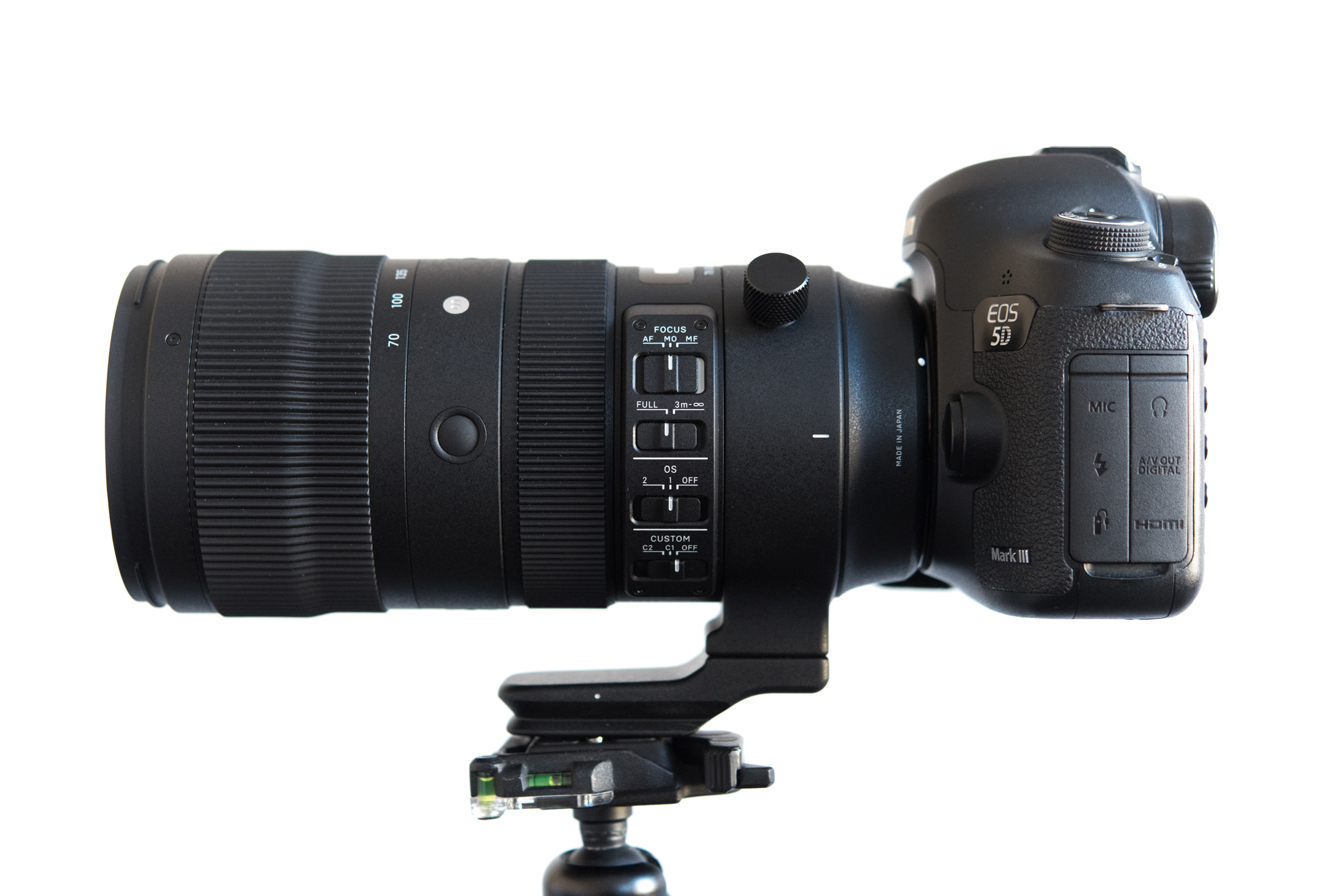
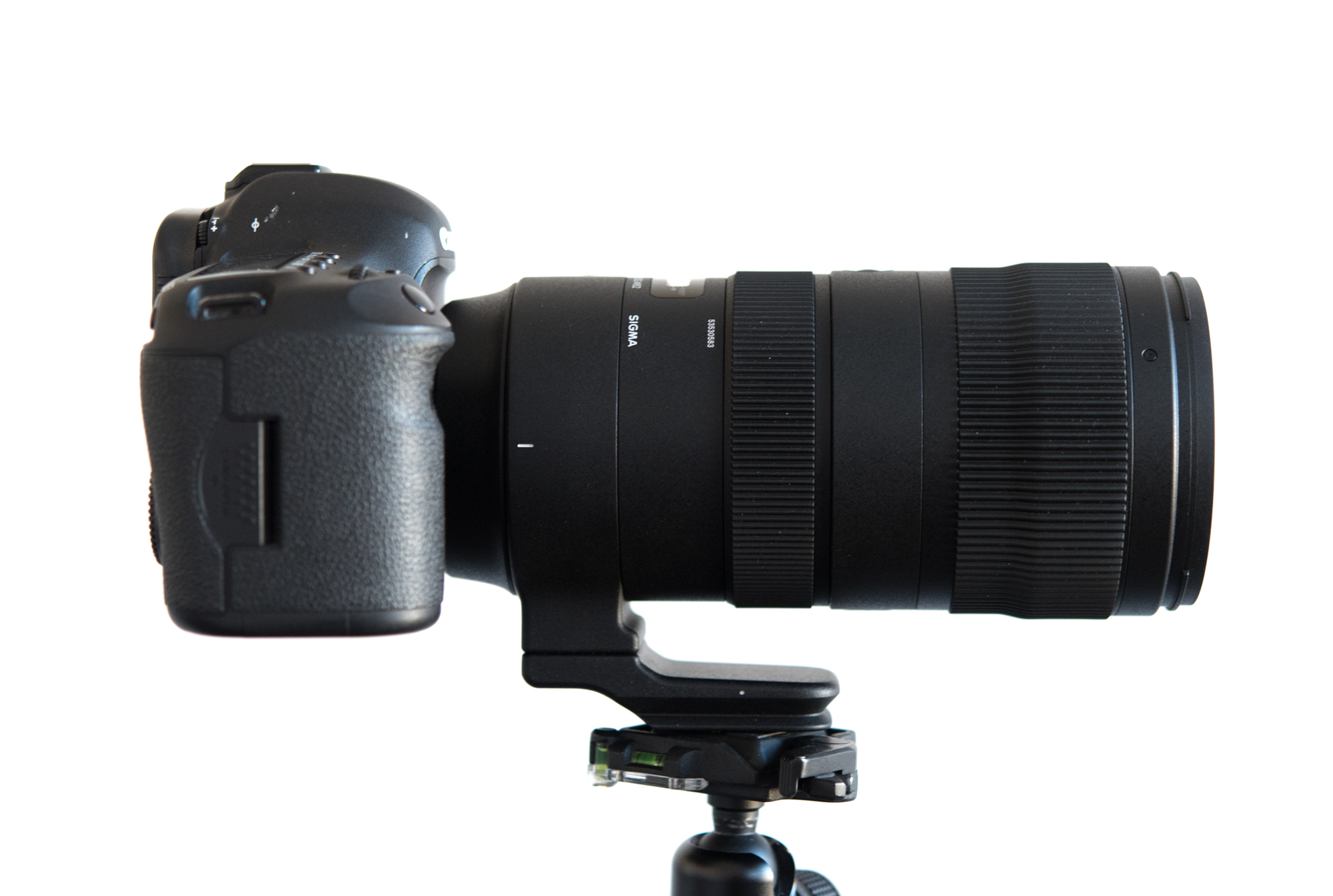
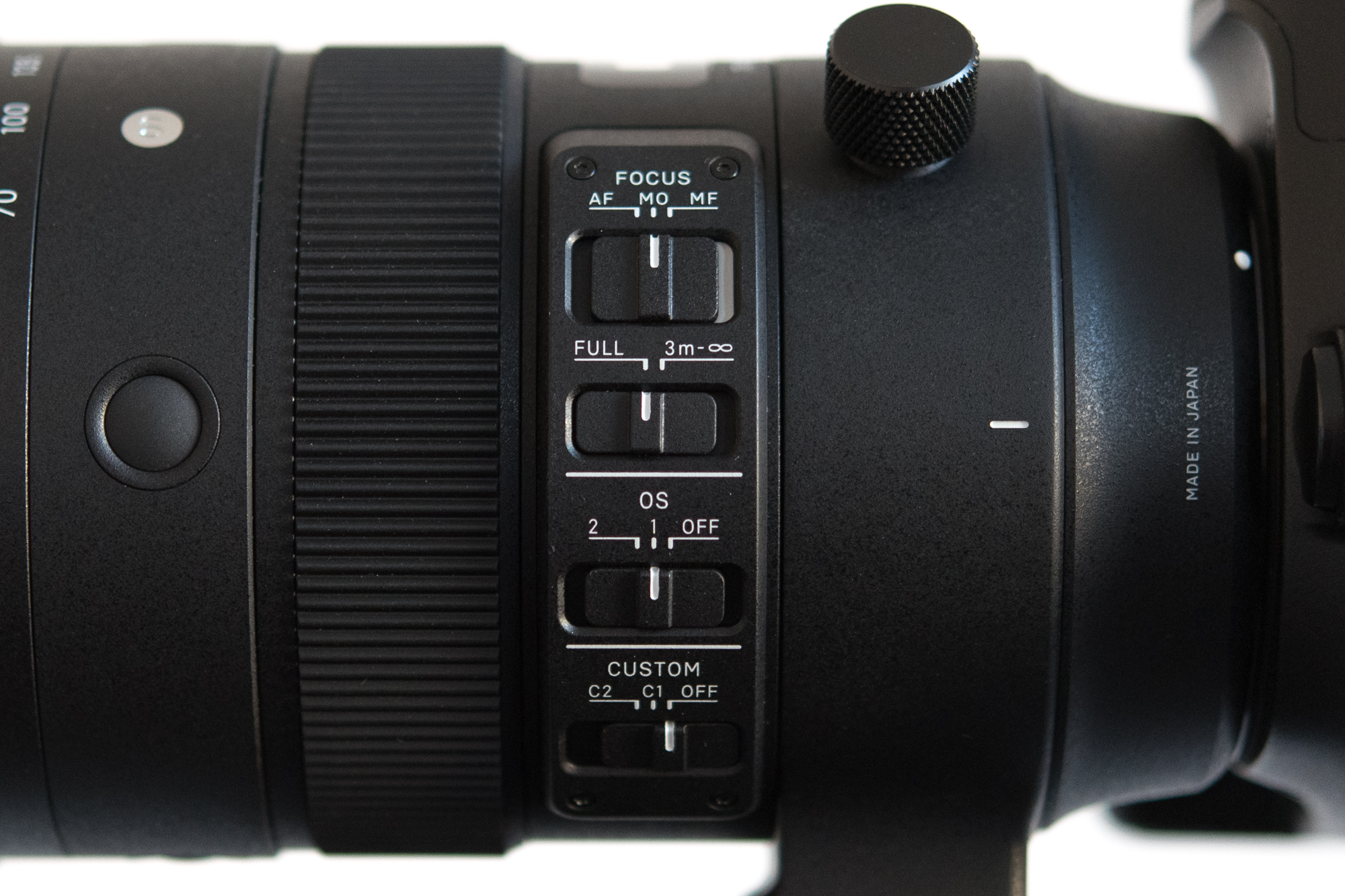
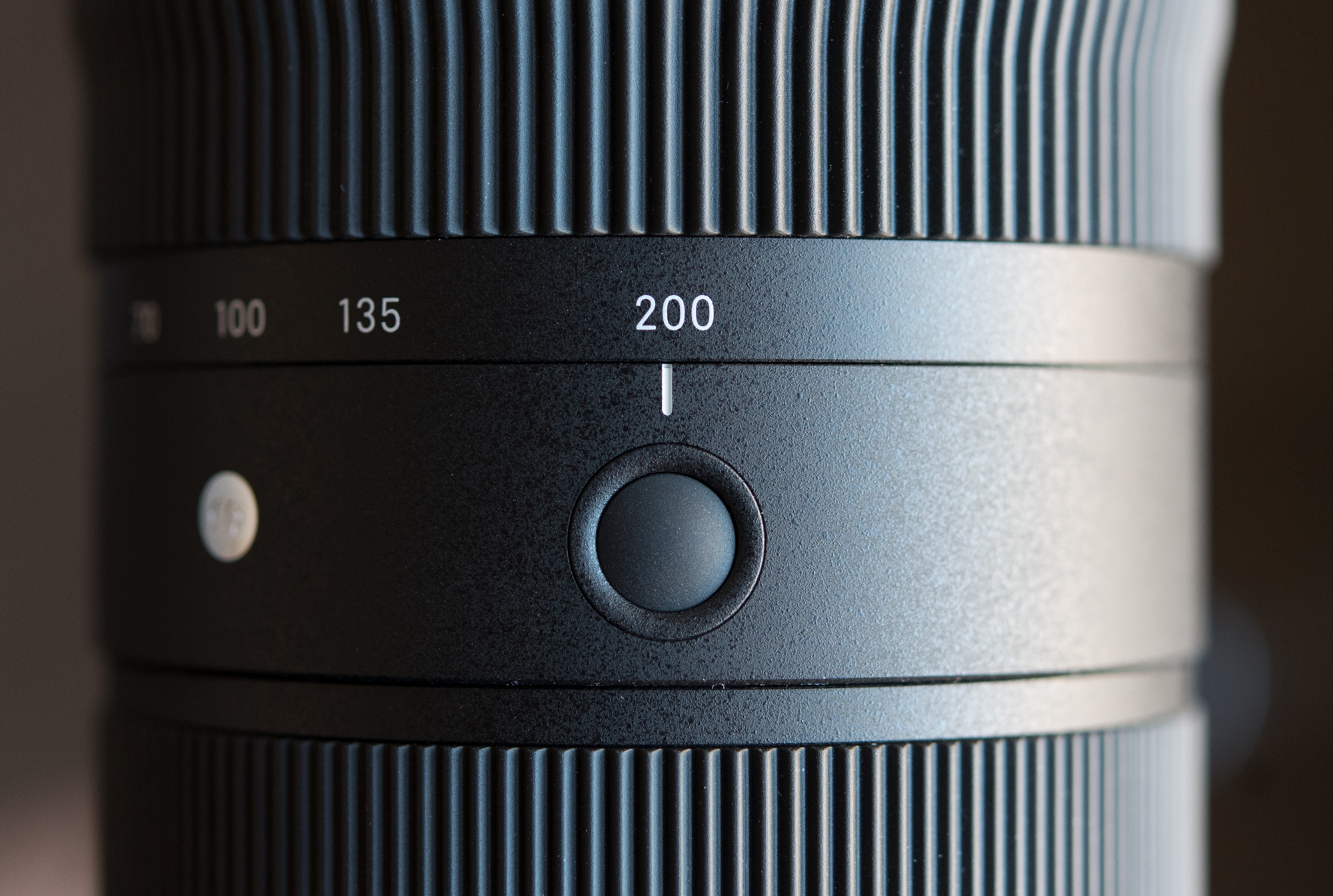
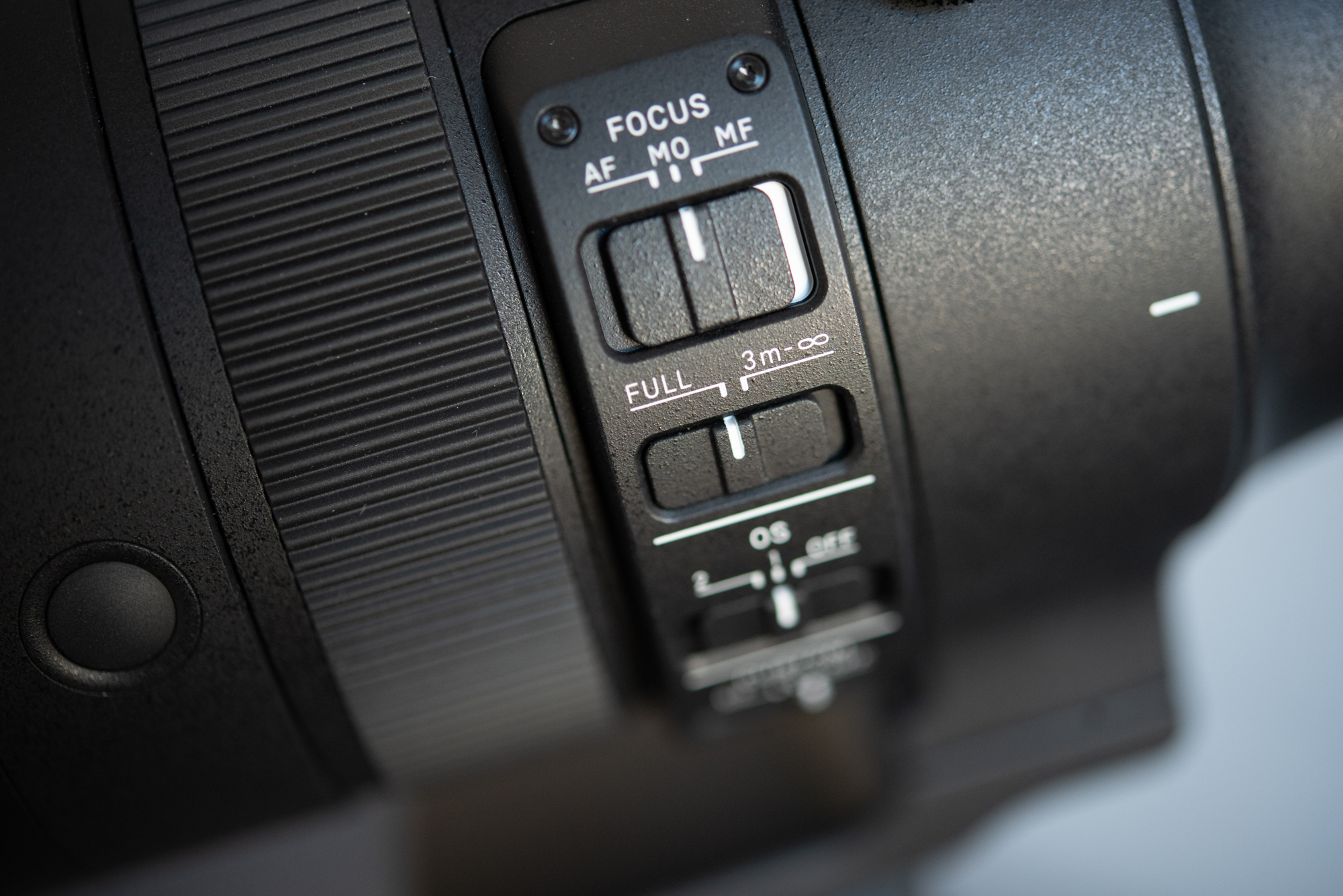
In terms of operation, Sigma has kept the order of controls to the same format as with its previous seventy-200mm 1:ii.eight EX DG Os HSM. This includes a zoom ring positioned right towards the front of the barrel and a focusing band behind this. Quite which way effectually these should be is a thing of personal preference, as it's common to see 1 setup every bit much as the other, although many photographers practise prefer to take the more than commonly used zoom band closer to the body where information technology's easier to reach.
A drove of switches lines 1 side of the barrel, namely focusing mode, focus limit range, optical stabilisation and a custom setting command. These are quite flush to the butt only easy to flick and they move between positions with a pleasing positivity. The lens likewise sports a triplet of buttons, and these can be customised to perform dissimilar focusing tasks.
Operation
- Fantabulous sharpness at f/ii.8
- 4-stop Intelligent OS works very well
- Some vignetting at both ends of the lens
The camera'due south autofocus system delivers a stiff performance throughout its focusing range. Whereas some lenses are characterised by manic movements followed by a final shift for accuracy, the lens on test moves smoothly simply surely between different focusing points, without the hesitation nosotros sometimes get only prior to confirming focus. There is a little dissonance equally this happens, although this isn't likewise distracting. Certainly if you turned off any beeps from the camera, you could realistically use this lens in more discreet environments without as well much carp.
The Intelligent Os system promises a maximum iv stops of correction, which equates to around one/13sec at 200mm, although testing shows that a steady hand tin can yield even better results. A number of images captured at i/10sec appeared acceptably sharp (even if information technology wasn't possible to achieve this consistently) but it was surprising to find images at 1/8sec and even 1/5sec to be rendered much to the same extent. Information technology's worth noting that this is with a 22MP full-frame camera, and that higher resolution models such as the Canon EOS 5DS and Nikon D850 may give more raise to slightly more blur when images are viewed at 100%. Even then, this is still a very good performance indeed.






Vignetting can be seen at both ends of the focal range, although it takes longer to lift from the 70mm end as you lot progressively stop down the aperture. It'due south only when y'all get to f/5 that it'south almost all gone, although fifty-fifty this is but really visible when shooting a uniform subject. The lens fares better at the telephoto finish, with mild-moderate vignetting wide open up, only this rapidly improves at f/3.2 and past f/4 it'southward not really an outcome.
There's very little curvilinear distortion at the 70mm end, although at that place's a touch of more than noticeable pincushion distortion at the 200mm. Again, however, this is only really visible when capturing subjects with divers linear details, rather than something that you'll see in general everyday employ.
Something that's particular impressive is control over chromatic aberrations, although with and so many low-dispersive elements in the optical array, this shouldn't come as besides great a surprise. Simply very small traces of lateral chromatic aberration tin be seen towards the edges of the frame at 70mm, and there's even less at 200mm. More than impressive is command over centric chromatic aberration the center of the frame, which is most absent.
Sharpness is already strong at both ends of the lens at f/2.8, every bit is consistency across the frame, and this just gets better equally yous close down the discontinuity. At heart-range apertures such as f/5.6, details are already and then well defined that you simply need a modest touch of sharpening when processing Raw files, otherwise more natural elements tin can appear overly sharp.
Verdict
At that place's a lot to love near this lens. With excellent item at even wider apertures, not bad control over chromatic aberrations, very effective image stabilisation and prompt autofocus, information technology delivers what the professional demands at this level. Bang-up build and weather sealing make it fifty-fifty more competitive, as does that toll tag. It'south not a cheap lens, but you get an impressive operation for the money.
No lens is faultless, and the minor chromatic aberration and more than visible vignetting visible hither are worth noting, although both tin can exist easily rectified. Possibly more of a pain is the fact that the lens is relatively heavy, and the fact that the tripod foot cannot be removed may bother those who tend to work handheld. Fifty-fifty so, these are minor marks against a lens that deserves serious attention. Bravo, Sigma!
- Best lenses for Canon total-frame DSLRs
- Best lenses for Nikon full-frame DSLRs
- Best lenses for Sony full-frame mirrorless cameras
- Best telephoto lens 2018: acme lenses for Canon and Nikon DSLRs
Source: https://www.techradar.com/reviews/sigma-70-200mm-f28-dg-os-hsm-or-sports-review
0 Response to "Sigma 70-200mm F/28 Dg Os Hsm Sports Lens Review"
Post a Comment